Helping Vermont’s forests adapt to climate change
6 min read / March 30, 2023 / By Rachel Mullis
Our website uses cookies to improve your experience. To learn more about how we use cookies, please review our privacy policy.
Can't find what you're looking for? Please contact us.
6 min read / March 30, 2023 / By Rachel Mullis
You might not notice it from a casual hike, but Vermont’s woods are a far cry from their natural state, which is messy with trees of all types, ages, and sizes.
Once richly forested, Vermont was mostly open land by the 1900s. European settlers heavily harvested our woods for timber and to make room for farms. The trees have since grown back, but heavy human intervention has left its mark.
Today’s forests are mostly 40 to 100 years old and unnaturally uniform. “It is ‘teenage’ forest—it looks great and provides lots of benefits,” says our forester, Dan Kilborn. “But it lacks complexity and diversity, and is less able to handle changes that are coming.”
Diversity, of species and of structure, allows forests to thrive. This is especially true as the climate shifts and natural disasters, pests, and diseases come and go. If young trees are vulnerable to one threat, older trees persevere. When some species decline, others can rise up to take their place.
Photo: Dan next to a very old maple tree that is being left to live out its full life in VLT’s Mud Pond Forest.
You’ve likely heard about the threat to ash trees from the invasive insect, Emerald Ash Borer. But low diversity, changing conditions, climate stressors, and invasive species is fueling new concerns.
Take the forest tent caterpillar, a native species that strips trees of their leaves and has been part of Vermont forests for a long time. A recent outbreak in northeast Vermont occurred after years of climate change-related drought. Some trees couldn’t overcome the stress and died.
“That’s just something we haven’t seen in the past,” says Dan.
The threat to Vermont’s forests may not be as immediate as the wildfires ravaging forests in western North America,” says Tony D’Amato, UVM Professor of Silviculture & Forest Ecology. “But, the biggest threat is actually a multitude of stressors. “It’s death by a thousand cuts.”
Photo: An ash tree at Jerusalem Skyline Forest in Starksboro.
Human interference fueled the decline of our forests. But, ironically, it could help them be stronger in the future. We have protected over 451,000 forested acres from development, but we can do more.
“We can manage our forests so they’re better able to absorb and respond to change—they’re more resilient,” says Dan.
We’re working with Tony and his team at UVM to figure out how best to do this at VLT’s Mud Pond Forest in Greensboro.
The effort is part of a bigger project led by the UVM team. The forest researchers are using several locations, including Mud Pond and a neighboring forest owned by The Nature Conservancy, to study different ways of managing Vermont’s forests.
“One of the best models for how to manage a forest is to look at how they naturally develop” explains Tony. “Our goal is to develop a sustainable approach to these forest challenges, and come up with solutions that could be adopted more widely.”
“We want to experiment and share what we learn, so landowners across our state can help their forests become stronger and healthier,” Dan adds.
Photo: A tree being monitored at Mud Pond Forest.
Video: Tony D'Amato at Mud Pond
Mud Pond Forest is a classic Vermont forest with sugar maples, white ash, yellow birch, and basswood. However, we know that many of the trees are of a similar age. And, a single species, sugar maple, dominates.
Sixty acres of the forest are part of the UVM study. In addition to actively managed areas, two areas will remain unmanaged so that comparisons can be made.
In the managed areas, we’re harvesting some trees to encourage growth of quality trees by reducing competition for water, sun, and nutrients.
Warren Hill Trucking, a local logging company, harvested the Mud Pond trees marked for removal. They were sold to local firewood buyers with higher quality wood going to a Vermont mill.
“We want to demonstrate how this approach can be both ecologically and financially sustainable for forest landowners in our state,” says Dan.
Pictured: Local logger Warren Hill III watches as his father Warren Hill II loads logs onto a truck.
Video: Warren Hill at Mud Pond
We’re helping non-dominant species such as yellow birch and basswood by planting more and by promoting favorable conditions. And many old trees are being left to live out their natural life.
It might sound strange, but we are also incorporating dead trees into our plan. They provide wildlife habitat, foster seedings, store moisture and carbon, add nutrients to the soil. To increase the amount of dead wood in the short term, some cut trees are being left.
UVM forest researchers will continue to monitor the study areas every few years to understand how these changes impact forest health.
“If we do this work in a thoughtful way, then hopefully these forests are going to provide us with timber, wildlife habitat, and all the other benefits we get from them for a long time,” said Dan.
Photo: Dan and Tony in a clearing at Mud Pond Forest. The clearing will support new growth and wildlife, including songbirds, and the dead wood will provide habitat, store carbon, and feed the soil.
Prepare your woods for change
All photos and videos by Kyle Gray
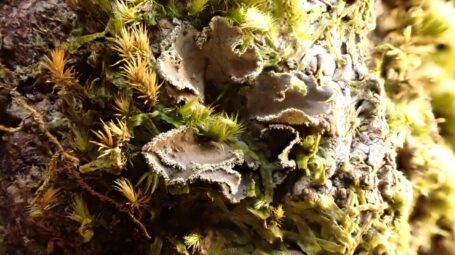
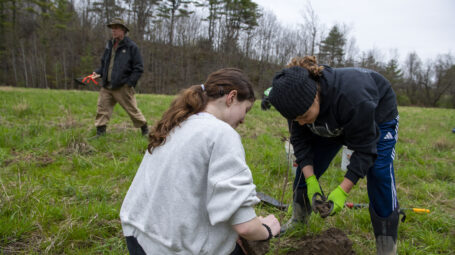
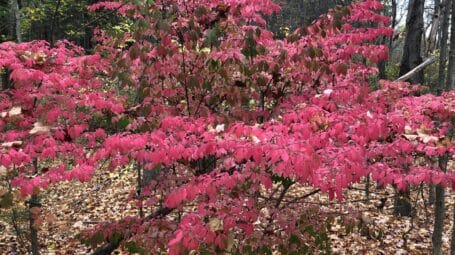
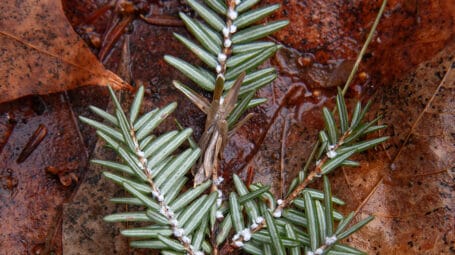
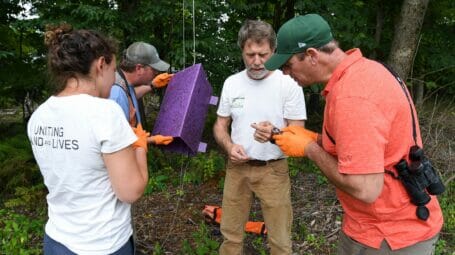
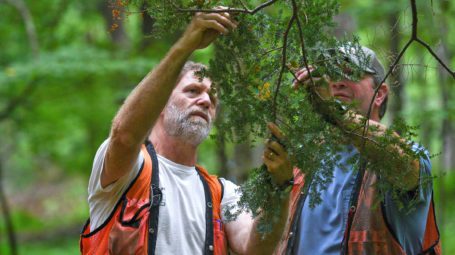
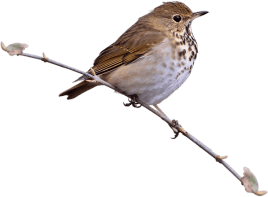
We generally send two emails per month. You can unsubscribe at any time.